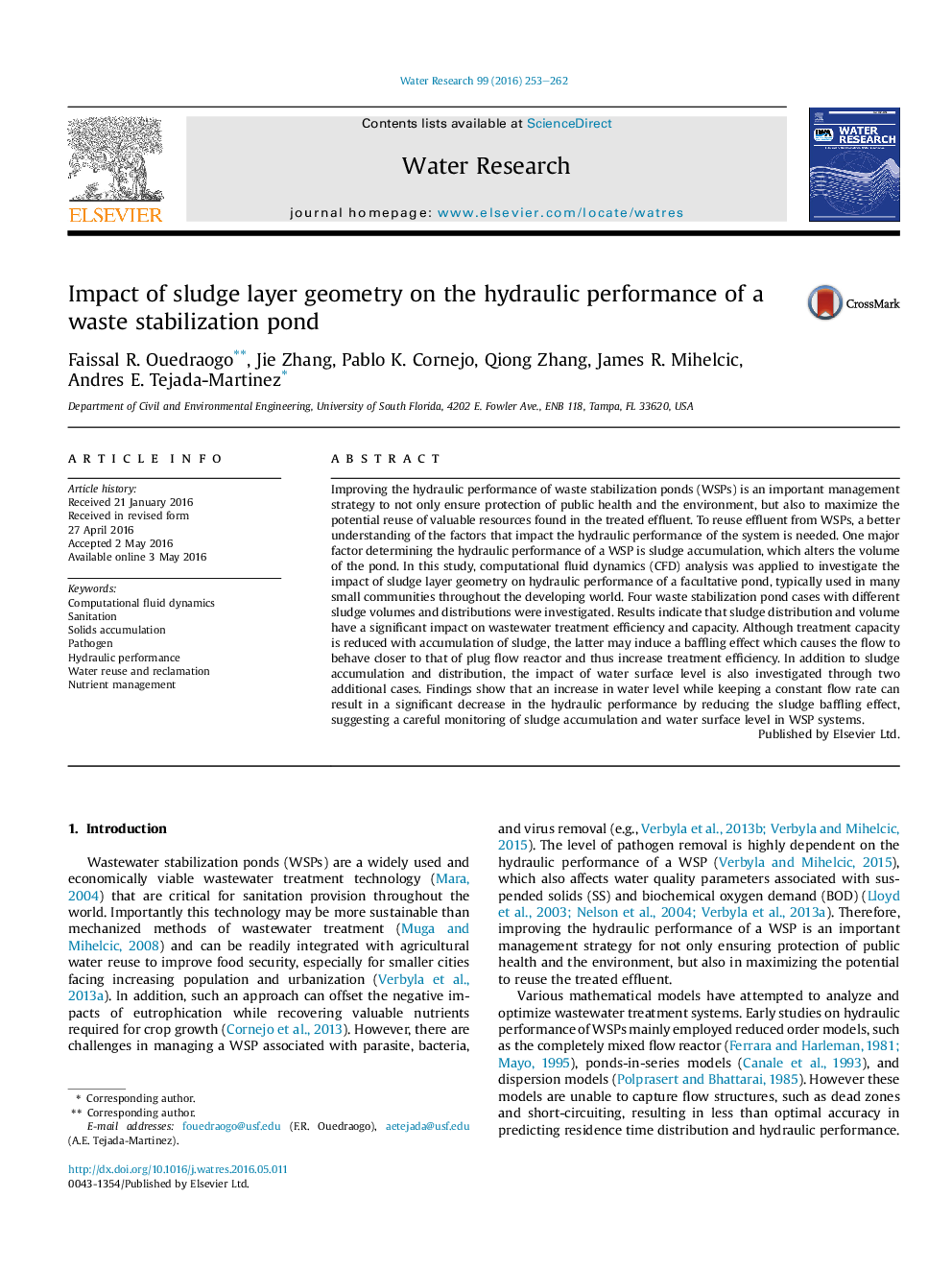| کد مقاله | کد نشریه | سال انتشار | مقاله انگلیسی | نسخه تمام متن |
|---|---|---|---|---|
| 6364992 | 1623069 | 2016 | 10 صفحه PDF | دانلود رایگان |
- CFD analysis of a waste stabilization pond (WSP) with bottom sludge is presented.
- Sludge induces a baffling effect and thus may improve hydraulic efficiency.
- Increase in water surface elevation reduces baffling effect via short-circuiting.
- Various metrics are calculated in order to quantify the baffling effect.
- CFD can be an invaluable tool for WSP managers to track pond hydraulic performance.
Improving the hydraulic performance of waste stabilization ponds (WSPs) is an important management strategy to not only ensure protection of public health and the environment, but also to maximize the potential reuse of valuable resources found in the treated effluent. To reuse effluent from WSPs, a better understanding of the factors that impact the hydraulic performance of the system is needed. One major factor determining the hydraulic performance of a WSP is sludge accumulation, which alters the volume of the pond. In this study, computational fluid dynamics (CFD) analysis was applied to investigate the impact of sludge layer geometry on hydraulic performance of a facultative pond, typically used in many small communities throughout the developing world. Four waste stabilization pond cases with different sludge volumes and distributions were investigated. Results indicate that sludge distribution and volume have a significant impact on wastewater treatment efficiency and capacity. Although treatment capacity is reduced with accumulation of sludge, the latter may induce a baffling effect which causes the flow to behave closer to that of plug flow reactor and thus increase treatment efficiency. In addition to sludge accumulation and distribution, the impact of water surface level is also investigated through two additional cases. Findings show that an increase in water level while keeping a constant flow rate can result in a significant decrease in the hydraulic performance by reducing the sludge baffling effect, suggesting a careful monitoring of sludge accumulation and water surface level in WSP systems.
Journal: Water Research - Volume 99, 1 August 2016, Pages 253-262
